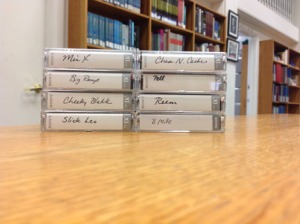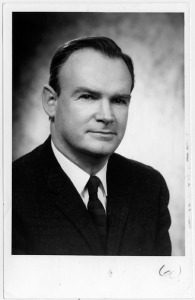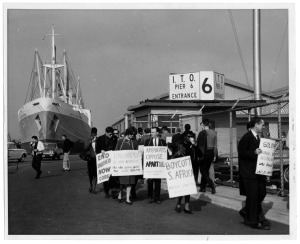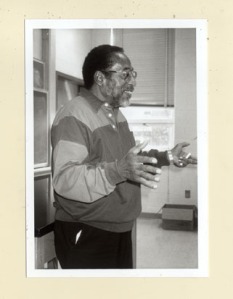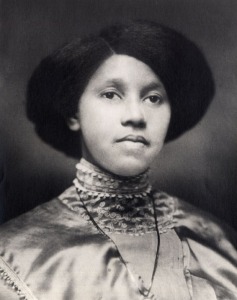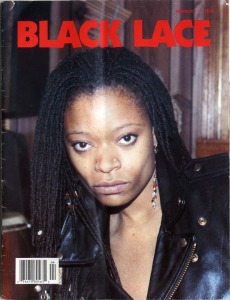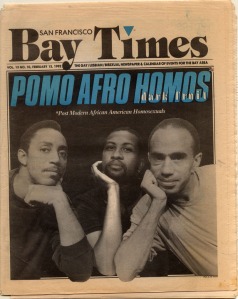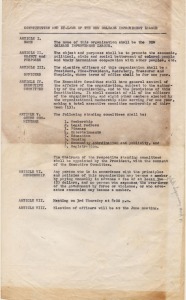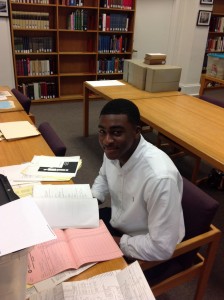All blog posts from November 2015 to the present can be found on Amistad’s new website located here.
The French American Chamber of Commerce
The French American Chamber of Commerce – Gulf Coast Chapter (FACC-GC) will host a forum about “The Changing Landscape of History: Digital Initiatives in New Orleans,” Thursday, Oct. 29, at 6 p.m. in the Stibbs Room of the Lavin Bernick Center at Tulane University. Vicki Mayer, Ph.D., will give an introduction to digital initiatives, followed by Vernon Valentine Palmer, Ph.D., who will present “Through the Codes Darkly: Slave Law and Civil Law in Louisiana.”
This free event is open to the public and sponsored by the FACC-GC, Ogletree Deakins, Tulane University and Sodexo. Partners are The Friends of the Cabildo, Amistad Research Center and University of New Orleans Midlo Center and the Francophone Section of the Louisiana State Bar Association. For more information or to RSVP, email info@facc-gc.com. http://ow.ly/T7Qdl
NOLA Hip Hop and Bounce Archive to Expand through Donation and Grant
A combination of community and individual support is helping the Amistad Research Center document a New Orleans living music tradition and expand the NOLA Hip Hop and Bounce Archive hosted by the Center. Thanks to a grant from the New Orleans Jazz & Heritage Foundation, Holly Hobbs conducted and donated twenty additional video interviews with rappers and bounce artists Reem, 5th Ward Weebie, Ms Tee, TT Tucker, Mia X, Cheeky Blakk, Chase N Cashe, and Pell; DJs Slick Leo, Big Ramp, DJ Captain Charles, and DJ Slab; producers Ceaux, DJ Don Juan, and Big Fess; bounce historians Colin Menigheni and Lefty; and videographers B Mike and Edward Buckles. These interviews will be added later this year to the the NOLA Hip Hop and Bounce Archive, a freely-accessible digital repository. Since its launch in December 2014, the Archive has been accessed by over a thousand researchers, including journalists, scholars, students, artists, and community members, making it one of Amistad’s most heavily used digital collections.
In addition, Defend New Orleans, a local clothing and printed goods store that supports New Orleans non-profits, donated $1,000 to further the digital archive. This support will further efforts to prepare the videos for inclusion in the Archive and expand descriptive information for greater access.
The Amistad Research Center sends a big thank you to the New Orleans Jazz & Heritage Foundation, Defend New Orleans, and Holly Hobbs for continued support of the NOLA Hip Hop and Bounce Archive.
Amistad Remembers Activist George Houser
We report with very sad news the passing of lifelong activist George M. Houser. Houser passed away on August 19 at the age of 99, having lived a life dedicated to the fight against injustice and inequality.
George was active both in the Civil Rights Movement and in international efforts to educate the world on anti-apartheid and anti-colonial movements in Africa. He served on the staff of the Fellowship of Reconciliation for 13 years and founded, with James Farmer, the Congress of Racial Equality (CORE) in 1942, for which he served as Executive Secretary for 10 years. In 1947, along with Bayard Rustin, he organized and participated in the first freedom ride of the Civil Rights Movement, the Journey of Reconciliation. George was instrumental in the formation of the American Committee on Africa (ACOA) and was its Executive Director from 1955-1981. ACOA grew out of the Americans for South African Resistance (AFSAR), which was formed to support the Campaign of Defiance Against Unjust Laws led by the African National Congress (ANC). At ACOA, Houser spearheaded numerous campaigns supporting African struggles for liberation and independence, from Algeria to South Africa and developed close ties to African leaders including Amilcar Cabral, Julius Nyerere, Eduardo Mondlane, Kwame Nkrumah, and Oliver Tambo.
George’s life and legacy are well documented at Amistad in the records of the American Committee on Africa and The Africa Fund, as well as Houser’s personal collection of slides and films from his various visits to the African continent. We have been very fortunate to share those with researchers from across the globe over the past few years.
Memorial events celebrating George’s life will take place in California, tentatively scheduled for September 19 and, at a later date, on the East Coast.
Post by Christopher Harter.
Images from the American Committee on Africa records. Not to be reproduced without permission.
Opening of Ronald E. Mickens Papers Highlights Amistad’s STEM Collections
The Amistad Research Center is excited to announce the opening of the papers of physicist and Clark-Atlanta University professor Ronald E. Mickens. The processing of the collection is thanks to an Institute of Museum and Library Services (IMLS) grant to process African American Science, Technology, Engineering, and Mathematics (STEM) collections. Dr. Mickens’ papers highlight his academic career as a researcher, writer, and teacher in the fields of physics and mathematics. Mickens received his PhD in Theoretical Physics from Vanderbilt in 1968 and went on to the Massachusetts Institute of Technology (MIT) for a prestigious National Science Foundation postdoctoral fellowship. Following his fellowship, Mickens taught physics at Fisk for several years before going to Clark Atlanta University (then Atlanta University) in 1982. In 1985, Mickens became the Distinguished Fuller E. Callaway Professor of Physics.
A prolific writer, Mickens wrote over 250 academic journal articles and eight textbooks and has contributed to many edited scientific volumes. In addition, Dr. Mickens is active in research and writing about early African American scientists, most notably a history entitled The African American Presence in Physics and the biography, Edward Bouchet: The First African American Doctorate. He traveled around the world and the United States for conferences and has served as a guest lecturer at universities all over the country. Dr. Mickens serves on the editorial boards of several research journals and is an active participant in numerous professional societies including the American Mathematical Society, the American Physical Society (for which he is an elected Fellow), and the National Association of Mathematicians (NAMI). He previously served as the historian of the National Society of Black Physicists and was one of the founders of the National Conference of Black Physics Students. Mickens married Maria Kelker in 1977 and they have two children, James and Lea.

Calculations from Mickens’ “Nonlinear Differential and Difference Equations” article, October 6, 1986
Dr. Mickens completed his studies during the height of the Civil Rights Movement in the South, at a time when academic opportunities for African Americans, especially in STEM fields, were challenging. Mickens’ correspondence, university, and grant materials show that, even once he had a tenure track position at Clark Atlanta, funding at HBCUs was so precarious that it was necessary for him to continually work to procure funding for his research. Mickens’ correspondence also reflects his collaborations with scientists, mathematicians, and students from around the world, as he shared calculations and research problems with contemporaries from Africa, Europe, Asia, and South America.
The collection also shows Mickens’ vast research interests, including non-linear oscillations, difference equations, the history of African Americans in science, and minority STEM education. The collection includes Mickens’ article and book manuscripts, as well as correspondence and materials showing his constant work to advance opportunities for African American students in math and science. For years Mickens kept a running directory of African American PhDs in the U.S. and academic institutions often contacted him for help finding black candidates to fill university positions.
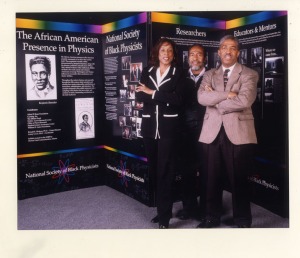
Dr. Cynthia McIntyre, Mickens, and Dr. James Stith in front of “African American Presence in Physics” exhibit, 1999. Mickens spearheaded this traveling exhibit with the National Society of Black Physicists as part of the American Physical Society’s Centennial celebration.
The collection also includes photographs and ephemeral materials showing Mickens’ educational and professional activities, including his articles in the Fisk Forum newspaper and newsletters from professional organizations like NAMI and the American Physical Society.
Post by Jessica Perkins Smith
An Intern’s Perspective on Archives and Processing
My name is Madeline Goebel and I am a junior at Tulane University who is volunteering at the Amistad Research Center this summer. Though I am halfway through my undergraduate education at Tulane, I had not set foot in the Amistad Research Center until I began my search for a summer occupation that would be both interesting to me as a history major and beneficial to the New Orleans community. I am so glad I was given the opportunity to assist the archival staff of the Amistad Research Center, an experience that has thus far met those criteria and proved to exceed my expectations.
After learning how to process and preserve a collection, I was put in charge of the Collins Family papers. The Collins, a family of African American farmers and landowners, lived in Mississippi during the nineteenth and twentieth centuries. Malachi Collins owned and operated the first black-owned funeral home and insurance company in Hattiesburg, Mississippi. His wife, Mary, served as the first African American librarian for the Andrew Carnegie Public Library. Their papers consist of correspondence, journals, collected items, and photographs of Mary, Malachi, his sister Sophronia Collins Easley, and other family members. Processing the Collins Family papers has given me the opportunity to closely examine documents and photographs that I would not have come across otherwise. I enjoyed reading Sophronia’s correspondence with her brother and husband. In doing so I learned about their daily lives, their religious beliefs and practices, and their personalities.
Upon finishing processing the Collins Family papers, I must say that I was both happy with and proud of the work I completed. I hope the collection will be of great use to future visitors of the Amistad Research Center. I now approach my next collection, the papers of Dr. Henry E. Braden III, with excitement, enthusiasm, and little bit of experience.
Post by Madeline Goebel.
Madeline Goebel was able to process the Collins Family papers through a grant from the Patrick F. Taylor Foundation. The Center thanks the Foundation for their support.
Images from the Collins Family Papers. Not to be reproduced without permission.
Impact and the Visibility of New Orleans’ LGBTQ Community
The Impact Collection, located at the Amistad Research Center, is comprised mainly of LGBTQ newspapers from around the United States that were received by the Impact newspaper office in New Orleans as part of an exchange program. Housed within Amistad’s library, the Impact Collection includes 131 different periodical titles dating from the mid 1980s to the early 2000s. The remaining materials are a separate archival collection, which includes correspondence, press releases on gay and lesbian issues, programs, as well as information on Men of Color, an organization of gay African American men.
The collection offers a glimpse into local gay and lesbian markets and events and news across the country. The newspapers reflected the high visibility garnered by white males within the gay press and community, but the contributions and presence of people of color and women were not entirely marginalized. Publications in the collection such as BLK: the National Black Lesbian and Gay Newsmagazine, Curve: the Lesbian Magazine, Black Lace, and B-Max addressed silences in mainstream gay newspapers related to women and people of color.
The newspapers were not limited to reporting on gay culture but provided insight into the broader popular culture which, oftentimes, was influenced by queer cultural practices. LGBTQ social movements that focused on civil rights and AIDS were widely featured including advocacy against discrimination and violence faced by gay Americans. The largest runs of newspapers are from the Washington Blade, Wisconsin Light, Seattle Gay News, and Impact.
Impact was a New Orleans-based newspaper that focused on topics of interest to the gay and lesbian community. The first issue was published in September of 1977 and was a small eight page periodical. It advertised itself as “New Orleans’ only home owned and operated gay publication.” Roy Leston was its publisher, with Gary Martin as managing editor and Larry Rogers and Will Koolsbergen as contributing editors. The newspaper advertised local businesses that catered to a gay clientele and offered political editorials and opinion pieces.
No official history of Impact exists and its significance to the New Orleans and even the national gay community has yet to be analyzed. Leston explained, in a letter to readers in the October 1977 issue, that the idea for Impact came from a visit to Northern cities where he witnessed organized gay communities with publications that aired their views. Leston noticed that this type of solidarity and voice was lacking in the South and more specifically New Orleans. He had hoped that Impact would fill these voids.
Impact was published, under variant titles, until August 2000 when it was bought by Window Media, which merged the paper with Atlanta’s Southern Voice. A list of the LGBTQ newspapers can be found here and the accession record for the collection is here.
Post by Chianta Dorsey.
Images from the Impact Collection. Not to be reproduced without permission.
My Summer at Amistad
My name is Christian Williams. I am a sophomore in the Department of Finance at Jackson State University. Through the NOLA Youth Works Summer Employment Program, I was provided with an opportunity to work as a student intern at the Amistad Research Center. Working at the Center has offered me much more than I’d anticipated. Immediately after being toured around the facilities, I was able to work hands-on with materials such as microfilms, various files on the Center’s collections, and personal papers belonging to historical figures. I’ve also helped organize financial records, photographs, and correspondence of important African American men such as Chester Himes and Llewelyn Soniat.
The most recent project I completed was the archival processing of the records of the New Orleans Improvement League (NOIL). In consultation with the Center’s staff, I researched the League’s founding and activities to write a brief history of the NOIL. Analysis of the League’s records allowed me to then write a description of the collection and enter it into Amistad’s online finding aid database.
The New Orleans Improvement League was an organization founded on June 21, 1956, to supplement the objectives of the NAACP, which had been banned from operating in the state of Louisiana. The NOIL acted to preserve the rights of African American citizens who were under the persecution of unconstitutional laws passed by the state legislature. The NOIL was heavily active within the community of New Orleans, and hosted mass meetings to discuss fundraising and legal costs, and to produce statistical studies to fight against segregated facilities and transportation. After reading through the collection, I worked diligently to catalogue the valuable information by arranging the materials into individual folders to aid researcher access to the collection.
Overall, my time spent researching, reading, writing, and organizing materials in a hands-on environment has played a major role in keeping my summer productive. Here at Amistad, I was blessed with a supportive staff, tranquil work environment, and a multitude of useful information. The finding aid for the NOIL can be found here.
Post by Christian Williams
Images from the New Orleans Improvement League Records. Not to be reproduced without permission.
My Internship at Amistad
My name is Lacey Hines and this summer, I am interning at the Amistad Research Center. I am a student at the Louisiana School for Math, Science, and the Arts in Natchitoches, Louisiana, and I will be entering my senior year in the fall. I found Amistad while conducting research on an ongoing personal project; I have been researching black, creole women and free people of color in Louisiana for about the past year now with the intention of writing a senior thesis on the social lives of black, creole women. While researching primary documents for a paper last year, I came across Amistad and decided to check out their website. When I found out that they were the largest independent archive specializing in the history of African Americans, I emailed the staff about possibly interning here over the summer. We felt that interning here would allow me to continue my research while gaining experience in archival work.
Since starting my internship, I have been working in the processing department. For the past two weeks I have been processing the Dixon and Franck Family papers, two collections focusing on the lives and families of Henry (Harry) B. Dixon and Charles Franck. Dixon was an African American businessman from New Orleans who owned his own land and business in the early 20th century. He was also an active member of many benevolent societies around New Orleans. Charles Frank, a German immigrant, settled with his family in Jefferson parish in the late 19th century. While at first glance the collections seemed small, I soon found that the collections were full of information concerning the daily lives of two ethnic groups in New Orleans. What I have found most interesting about the Dixon papers has been the information I have gained about the multitude of black benevolent societies. This topic is somewhat related to my research, so it has been fascinating to learn more about the social clubs and groups that middle-class African Americans participated in at the turn of the 20th century.
The Franck papers are not as extensive as the Dixon papers, but they are still interesting nonetheless. As someone who was raised in Gretna, Louisiana, which has a rich German history, the Franck family has been fascinating. Featured in the Franck files are three documents in German, one of which is a baptismal certificate dating back to 1864 in Jefferson Parish. In elementary school, we used to take historical tours of old Gretna and processing these collections has brought everything back to me. So far, I have really enjoyed working with these two collections and getting a glimpse into the lives of these two men and their families. I can’t wait to see what else I find while conducting my personal research and processing collections this summer.
Posted by Lacey Hines
Images from the Dixon and Franck Family papers. Not to be reproduced without permission.
Join Us For Our Open House on GiveNOLA Day!
 To celebrate this 24-hour campaign of non-profit giving, the Center will host an open house for its new exhibition, The Things We Do For Ourselves: African American Civic Leadership in the Crescent City, from 4:00-7:00 pm on Tuesday, May 5th.
To celebrate this 24-hour campaign of non-profit giving, the Center will host an open house for its new exhibition, The Things We Do For Ourselves: African American Civic Leadership in the Crescent City, from 4:00-7:00 pm on Tuesday, May 5th.
Drawing from Amistad’s rich archival and library collections, the exhibition will highlight leaders and organizations in the areas of business, education, philanthropy, and civic engagement from the mid-19th through the mid-20th centuries. The exhibition will be on display from April-August 2015.
Visitors can view the exhibition, enjoy refreshments, talk with staff about the Center’s collections and projects, and support the Center through giving stations linked to the GiveNOLA Day website. Joining staff will be Amistad’s new executive director, Dr. Kara T. Olidge. An announcement about Dr. Olidge’s new position can be found here.
Support from friends, donors, and partners helps the Amistad Research Center fulfill its mission and provide outstanding service to researchers and visitors from around the block and around the world. All individual gifts donated during the GiveNOLA campaign will be proportionally matched by “lagniappe” dollars, a larger pool of community funds to amplify every dollar raised.
Whether you are in the New Orleans area or beyond, please mark your calendars to give to the Amistad Research Center on May 5. Donations can be made via the link below. We’ll have updates via our Facebook and Twitter pages that day, or you can watch the leaderboard on the GiveNOLA website.
Donate to the Amistad Research Center
By donating a little (or a lot!) you can make a major contribution
to the Amistad Research Center this year!

